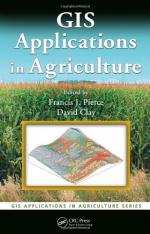|
This section contains 293 words (approx. 1 page at 300 words per page) |
GIS is the common abbreviation for Geographic Information Systems, a powerful and widely used computer software program that allows scientists to link geographically referenced information related to any number of variables to a map of a geographical area.
GIS programs allow scientists to layer information so that different combinations of data plots can be assigned to the same defined area. GIS also allows scientists to manipulate data plots to predict changes or to interpret the evolution of historical data.
GIS maps are able to convey the same information as conventional maps, including the locations of rivers, roads, topographical features, and geopolitical information (e.g., location of cites, political boundaries, etc.).
In addition to conventional map features, GIS offers geologists, geographers, and other scholars the opportunity to selectively overlay data tied to geographic position. By over-laying different sets of data, scientists can look for points or patterns of correspondence. For example, rainfall data can be layered over another data layer describing terrain features. Over these layers, another layer data representing soil contamination data might be used to identify sources of pollution. In many cases, the identification of data correspondence spurs additional study for potential causal relationships.
GIS software data plots (e.g., sets of data describing roads, elevations, stream beds, etc.) are arranged in layers that be selectively turned on or turned off.
In addition to scientific studies, GIS technology is increasingly used in emergency planning and resource management. When tied in with GPS data, GIS provides very accurate mapping. GIS provides, for example, powerful data correlation between pollution patterns monitored at specific points and wildlife population changes monitored by GPS tracking tags.
Broad in scope, GIS is becoming more widely used in business and marketing studies.
See Also
|
This section contains 293 words (approx. 1 page at 300 words per page) |


